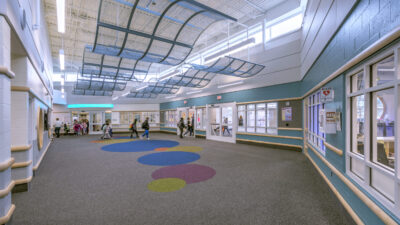Building codes and standards aid engineers in designing industrial and manufacturing buildings

Manufacturing building codes and standards insights
- Codes and standards such as those from ASHRAE, International Code Council and NFPA help define how manufacturing and industrial buildings are designed.
- Life safety codes must be adhered to in manufacturing buildings, and are defined in NFPA codes and standards.

Respondents:
- Jason Gass, PE, CFPS, Fire Protection Discipline Engineer, CDM Smith, Pittsburgh, Pennsylvania
- Alex Engelman, PE, LEED AP, CEM, Associate Principal, Syska Hennessy Group, New York, New York
- Matthew Merli, PE, Principle/Science & Technology Market Leader, Fitzmeyer & Tocci Associates Inc., Woburn, Massachusetts
Please explain some of the codes, standards and guidelines you commonly use during the project’s design process. Which codes/standards should engineers be most aware of?
Jarron Gass: Being on the constructing side of design in the MEP/fire protection realm and specifically supporting fire protection and life safety, I tend to live in the state or jurisdictions adopted fire code (typically International Fire Code and NFPA 1: Fire Code) and then into the various standards that are adopted by those codes. NFPA 13: Standard for the Installation of Sprinkler Systems, NFPA 72: National Fire Alarm and Signaling Code and NFPA 101: Life Safety Code and egress items.
Alex Engelman: NFPA for fire protection and life safety aspects and all recent local legislation that fines building owners on their carbon footprint
Matthew Merli: Well, the big ones are always International Building Code, International Mechanical Code, NFPA 70: National Electrical Code and other NFPA codes. NFPA hits a wide variety from sprinkler design to laboratory design. ASHRAE, ASME are a few others in our industry as mechanical/electrical engineers. There are also more and more sustainability or occupant well-being codes. LEED, WELL, NetZero and some others are out there. Another, HVAC-related code, that is helpful on many projects is the Industrial Ventilation Manual of Recommended Practice.
What are some best practices to ensure that such buildings meet and exceed codes and standards?
Jarron Gass: For me, the goal is to prove the appropriate amount of protection for a facility from both a code and an owner preference perspective. On one side, providing more protection than is necessary might not provide much of a return on investment when compared to the cost of implementation. On the other side, not providing enough protection could lead to catastrophic results up to and including death or loss of property. Finding the correct balance of protection for each project is always the goal.
Alex Engelman: For some developers targeting end clients with aggressive sustainability goals; those projects and clients drive the design from an energy performance standpoint and embodied energy standpoint.
Matthew Merli: With these types of buildings (manufacturing, industrial), they typical have huge energy use. So, it is important to not only think about the building itself (i.e., wall construction, HVAC systems, lighting design, etc.); but also important to think about the process within the building. Working with the owner to see how energy reduction can occur is critical, as that is usually the biggest energy user of the building.
How are codes, standards or guidelines for energy efficiency impacting the design of industrial and manufacturing facilities?
Jarron Gass: It seems to go two ways, depending on client, project, use, etc. One way being that the adopted codes help streamline and guide the more traditional projects, while on the other hand they will slow the process down when the desired or necessary building or process is not able to be jammed into the mold. Efficiency is desired in the design, building and lifecycle analysis of any facility. Trying to drive the narrative toward increased sustainability while adding value by showing the offsets and gains long term of increased upfront cost.

What new or updated code, standard, guideline organization or association do you feel will change the way such projects are designed, bid out or built?
Jarron Gass: I think that we need the ability to be more flexible in how we design buildings that might not fit a particular mold that is prescribed in the codes. I think that different engineering society groups, such as the Society of Fire Protection Engineers and their Guide to Guide to Performance-Based Fire Safety Design are going to be instrumental in fostering the type of innovation and forward thinking that is already required to think outside the box while still meeting or exceeding the prescriptive goals.
Alex Engelman: DBIA is one organization that helps support design-build projects though education and training and facilitation comes to mind.
What are some of the biggest challenges when considering code compliance and designing or working with existing buildings?
Jarron Gass: Reuse projects present challenges to prescriptive codes simply because you are seeking to use something for a different purpose than it was originally intended. In fire protection, we are often presented with water supply challenges when the new use is considered a higher hazard than original use and existing infrastructure cannot accommodate the increased supply without major modifications. The use of performance-based design to find solutions that can provide the same level of protection through alternative means and methods using various tools such as fire and smoke modeling is allowing the industry to outpace the prescribed codes and standards.
Alex Engelman: Life safety is paramount and closely examining the sprinkler and fire alarm systems and how they may support the target tenancy is one of our early focuses. Next would be the electrical service to support the tenant needs and future electric vehicle and potential for photovoltaics tie-in.



